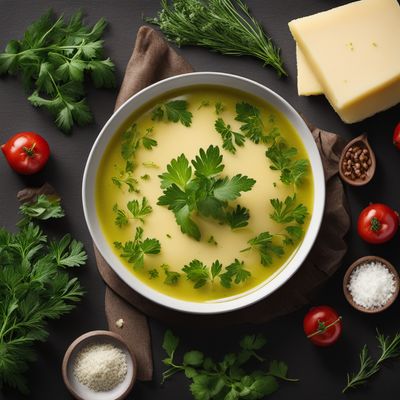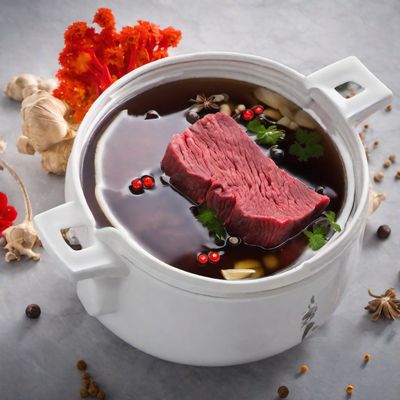
Recipe
Molecular Gastronomy Cordon Bleu
The Futuristic Twist on Classic Cordon Bleu
4.6 out of 5
In the realm of molecular gastronomy, we reimagine the traditional Swiss dish, Cordon Bleu, with a touch of innovation. This avant-garde version of Cordon Bleu combines the essence of molecular gastronomy techniques with the timeless flavors of the original Swiss recipe, resulting in a visually stunning and delectable dish.
Metadata
Preparation time
30 minutes
Cooking time
15 minutes
Total time
45 minutes
Yields
2 servings
Preparation difficulty
Medium
Suitable for
Omnivore, Low-carb, High-protein, Gluten-free, Keto-friendly
Allergens
Dairy, Gluten, Pork
Not suitable for
Vegetarian, Vegan, Dairy-free, Paleo, Nut-free
Ingredients
While the original Swiss Cordon Bleu consists of breaded and fried veal or chicken stuffed with ham and cheese, our molecular gastronomy adaptation focuses on transforming the textures and presentation. By utilizing modern culinary techniques, we create a visually captivating dish that surprises the palate with unexpected bursts of flavor and unique textures. We alse have the original recipe for Cordon Bleu, so you can check it out.
-
2 chicken breasts (200g each) 2 chicken breasts (200g each)
-
4 slices of prosciutto 4 slices of prosciutto
-
4 slices of Swiss cheese 4 slices of Swiss cheese
-
50g bread crumbs 50g bread crumbs
-
2g sodium alginate 2g sodium alginate
-
2g calcium lactate 2g calcium lactate
-
100g water 100g water
-
50g liquid nitrogen 50g liquid nitrogen
-
Salt and pepper to taste Salt and pepper to taste
Nutrition
- Calories (kcal / KJ): 350 kcal / 1465 KJ
- Fat (total, saturated): 15g, 7g
- Carbohydrates (total, sugars): 10g, 2g
- Protein: 40g
- Fiber: 1g
- Salt: 2g
Preparation
-
1.Butterfly the chicken breasts and season with salt and pepper.
-
2.Place a slice of prosciutto and Swiss cheese on each chicken breast.
-
3.Roll the chicken breasts tightly, securing them with toothpicks.
-
4.In a bowl, combine the bread crumbs with a pinch of salt and pepper.
-
5.Roll the chicken breasts in the bread crumbs, ensuring they are evenly coated.
-
6.In a separate bowl, dissolve sodium alginate in water and set aside.
-
7.In another bowl, dissolve calcium lactate in water and set aside.
-
8.Dip the breaded chicken breasts into the sodium alginate solution, coating them thoroughly.
-
9.Carefully drop the coated chicken breasts into the calcium lactate solution and let them sit for 2 minutes.
-
10.Remove the chicken breasts from the calcium lactate solution and rinse them under cold water.
-
11.Place the chicken breasts in liquid nitrogen for 30 seconds to flash freeze them.
-
12.Remove the chicken breasts from the liquid nitrogen and let them thaw for a few minutes.
-
13.Preheat a pan over medium heat and sear the chicken breasts until golden brown on all sides.
-
14.Transfer the chicken breasts to a baking dish and finish cooking in the oven at 180°C (350°F) for 10 minutes.
-
15.Allow the chicken breasts to rest for a few minutes before removing the toothpicks.
-
16.Serve the Molecular Gastronomy Cordon Bleu with your choice of side dishes.
Treat your ingredients with care...
- Chicken breasts — Ensure the chicken breasts are evenly butterflied for even cooking.
- Sodium alginate — Dissolve the sodium alginate thoroughly to avoid clumps in the coating solution.
- Calcium lactate — Make sure the calcium lactate is fully dissolved to achieve the desired texture.
- Liquid nitrogen — Handle liquid nitrogen with caution and use protective gloves when immersing the chicken breasts.
Tips & Tricks
- For an extra burst of flavor, experiment with different types of cheese such as Gruyère or Emmental.
- To add a touch of acidity, serve the Molecular Gastronomy Cordon Bleu with a squeeze of lemon juice.
- If liquid nitrogen is not available, you can skip the flash freezing step and proceed with cooking the chicken breasts directly after coating.
- For a crispy exterior, double coat the chicken breasts by repeating the dipping and coating process.
- Serve the Molecular Gastronomy Cordon Bleu with a side of molecular gastronomy-inspired sauces for a complete experience.
Serving advice
Present the Molecular Gastronomy Cordon Bleu on a sleek, modern plate to highlight its innovative nature. Garnish with microgreens or edible flowers for an elegant touch. Serve with a side of molecular gastronomy-inspired sauces to enhance the flavors and textures of the dish.
Presentation advice
Arrange the Molecular Gastronomy Cordon Bleu on the plate with precision, ensuring that the chicken breasts are sliced diagonally to showcase the layers of prosciutto and cheese. Drizzle the plate with artistic streaks of sauce for an eye-catching presentation.
More recipes...
More Swiss cuisine dishes » Browse all

Serre la sus
Serre la sus is a traditional French soup made with leeks, potatoes, and cream. It is known for its rich and creamy flavor.

Fastenwähe
Fastenwähe is a traditional Swiss pastry that is typically served during the Lenten season. It is a sweet and spicy pastry that is perfect for the...

Dresil
Barley and potato stew
Dresil is a traditional Tibetan dish made with barley flour and butter. It is a staple food in Tibet and is often served during festivals and...











